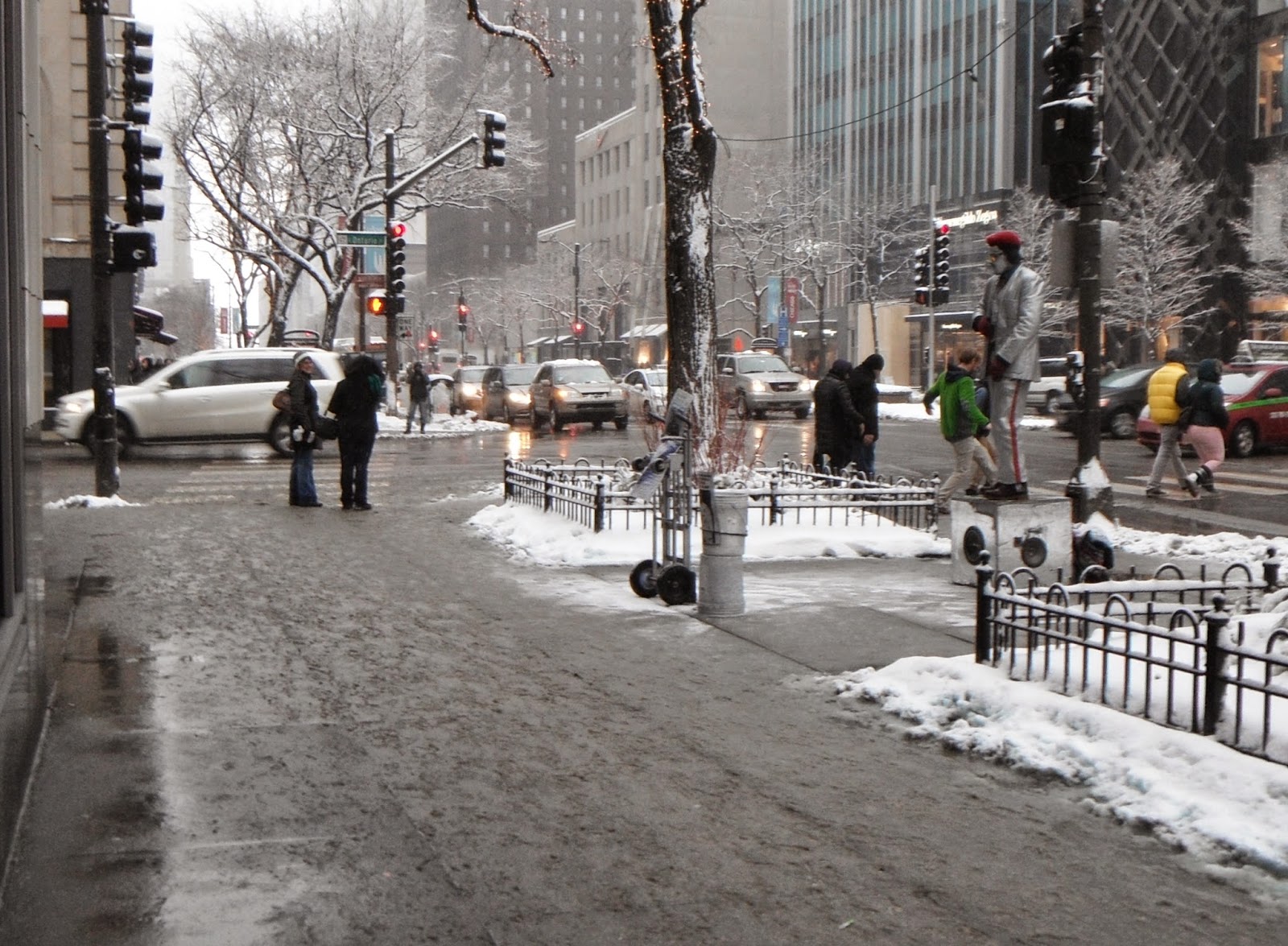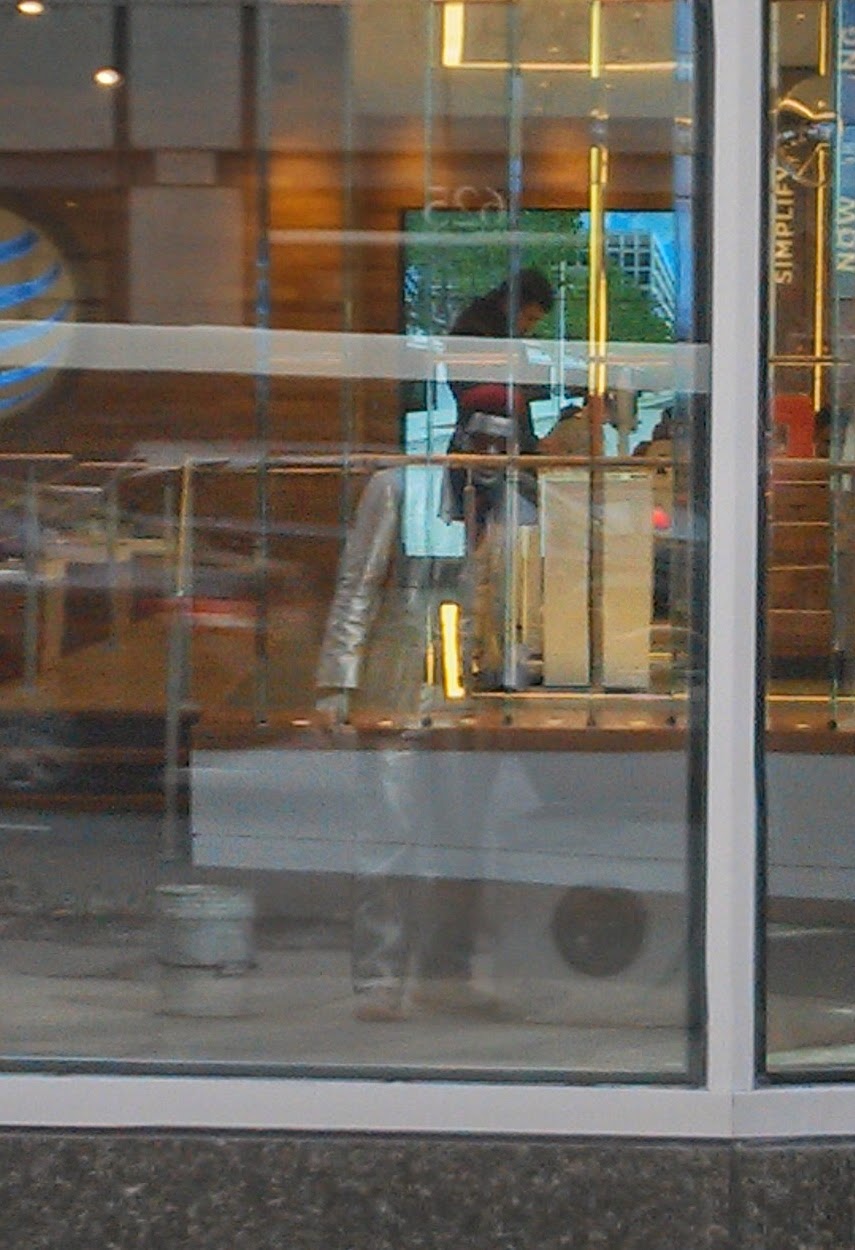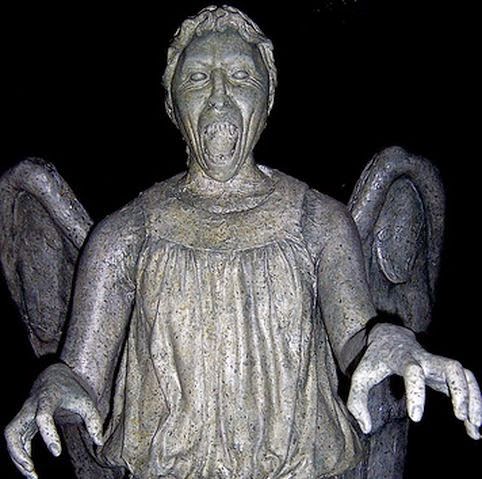Say hello to the Tin Man again!
 |
He is on camera! And... the cameraman is on camera. And of course I used a camera
to take a photo of the camera filming the camera filming the Tin Man.
It's a... meta-camera?
The cameras get smaller and smaller.
And people started comparing camera sizes...
And this is an awfully long caption. |
By the way, the guy with the camera in the front left of this picture is pretty awesome. He helped me capture some footage of various buskers. In this photo, we managed to stumble into WGN-TV (a local Chicago news station) doing a profile piece on the Tin Man...
Anyway! Tangent aside, I started my profile piece on the Tin Man
yesterday.
Becoming a Street Performer
"In middle school, I, um, I got in trouble a lot.
So I was grounded all the time. Like, throughout the school year, my whole
summer break, even going into my freshman and sophomore year in high school, I
was getting in trouble, you know, around the house and at school, doing stupid
stuff, but I would be grounded. The only thing I had to do while grounded was..
um.. I had a clock radio and a mirror. So I just did my moves in front of my
mirror for hours and hours and hours and days. And after I graduated high
school and I went to college and I felt, like, you know, I was still probably
gonna get in trouble, I found out a way to use what I learnt when I was grounded…
to make some money from it. So I took those moves from my clock radio and my
mirror days downtown."
"-and my first day was so profitable, I quit my job, I quit
college, I moved out of my parents’ house. And that.. that was in ’03. 2003.
So, uh, I've been performing… street performing about ten years now."
First Day Out
"When
I first started, I, um, had a small lunchbox. I put it right in front of me and
I was on the ground. I didn’t have any music. When I first started, it was
cold, it was like 29 degrees, it was at the end of December. And I was just
standing still, and if someone put something in, I would do a move. But…
later on through the years, I found out different ways of entertaining people
and getting a little bit more money out of them."
The Evolution of his Act
"I
started off silver. The thing about it is… once I started in silver, maybe
like.. six, seven months later, other people thought that they could come out
in silver and do the same thing, so… it got to a point where there was about
seven or eight different silver people on Michigan Avenue."
 |
| An older silver costume of the Tin Man's |
"So,
um, I had to go back to the lab and make a new outfit, and I came out in all
black. I had an all black suit, I painted my face all black, and, um, I just
did my statue thing in all black, and that was pretty cool. I was able to find
the patent that Michael Jackson had – Smooth Criminal, when he did that lean?
So I found the patent, purchased it, and brought it downtown in my black
outfit."
 |
| The Tin Man, all in black, with MJ's patented lean. |
Interestingly, Tin Man told me that he soon sold the patent to another street performer because the lean had become "like a crutch. People didn't want to see my dance moves. They didn't want to see anything except for me leaning. I became a one-trick pony. So I had to get rid of it."
It was during this stage of his evolution, he told me, where he learned his most valuable lessons - when, he said people "were scared of" him because they thought his "skin really was that dark." He explained that because people didn't want to take pictures with him in this costume (unlike when he was silver), he had to find a different way to get his audiences to donate because his "outfit wasn't selling" him and his audiences didn't "care about [his] dance moves." We'll explore these lessons another day...
But the look does matter
And it is ultimately "a game of catch-up. The moment I do something, and it
becomes profitable and other people see it, then they start doing it. Then I
gotta change it, I gotta do something else. Um… like when I had the black
outfit, there was other people coming out in blue… green… so I had to go back
to silver. And, um, then it was people coming out in silver, but their outfits
were spray-painted. So I went to the tuxedo store, bought a brand-new tuxedo –
like, six, seven hundred bucks – and I painted it silver."
"And I went outside
downtown, it just… that tuxedo looked so gorgeous silver. Aw, there was
just, it was just nothing touching it. It was just nothing anybody could make,
because I went and spent money on a real outfit, not something at a Salvation
Army, and, uh, that look and that feel… it looks different, you know. The
quality of it. So.."
"BUT of course, people felt they could spend money on suits
too. So I had to go change out again. I had to go find, um, a seamstress. I had
to go find material and have a suit sewn together for me. And I… nobody’s done
it yet, but the moment they do, I gotta go out and do something else."
"I had to color my hair and get
my glasses to match. And that gave me, you know, my own little unique look.
Until somebody does that."
 |
| The Tin Man today |
Stay tuned for more tomorrow! More on what the Tin Man actually does...

.jpg)




.jpg)
.jpg)







